
Let’s be clear and upfront. I am not a snake specialist. I live near Vilcabamba, a small village in the Loja province of southern Ecuador. My house is on a large piece of rural land (una finca) surrounded by beautiful wilderness and yes there are snakes (and scorpions and spiders).
Having said that, I took some time to try to identify simple ways to tell whether one snake specimen is deadly or totally harmless, something that you must admit is good to know when you encounter one.
Like I said, I am no specialist and this write-up is no attempt to cover the subject exhaustively. It is rather an attempt to make simple and easy to understand something scary and apparently complicated. Readers will tell me if I succeeded.
I roamed the land for years without ever bumping into one of those creatures until one day finally I almost stepped on one very large Bothrops Asper, the one that they call here the Macanche, that was having a nap in the sun right in the middle of my road a few meters only from my front door. It was 2 meters long approximately (no I did NOT measure it with a tape) and its body must have been around 10 cm – 15 cm diameter. After a moment of sheer panic, I went to get my camera and since I could see that the creature was very calm and in no way about to jump on me, I sat down a few meters from her and took some photos.
I say “her” because I now know that only the females of that species can be that large. I had no idea then that I was looking at one of the deadliest snake on the planet, let alone a large specimen of it. My instinct was telling me that she could feel my energy and since my energy was good nothing bad would happen. I was very curious I must admit. So below, there she is just like I found her.

After a few years without seeing another Equis, recently I had my second encounter, a smaller specimen this time. I had a better camera with me with a better zoom and I took some good close-ups. On the photo below, the shape of the pupil can be seen and it is vertical which is an important parameter.
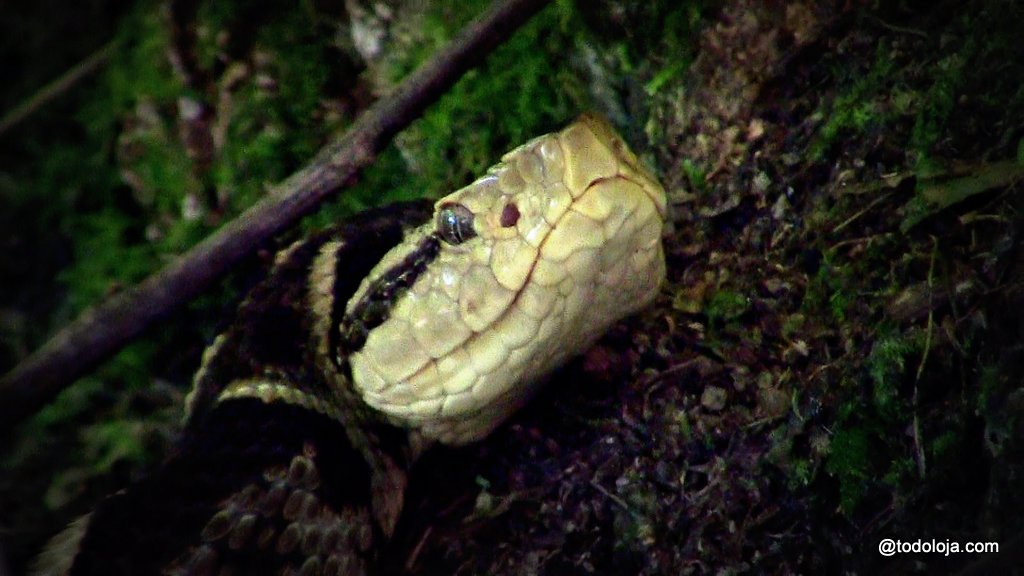
On the photo just above as well as the almost all of them, two reddish dots can be seen between the eyes and the nostrils. This is one of the most important identification attributes. These are called “loreal pits” or “Jacobson’s organ” and are part of the sensory organs along with the tongue that my friend is precisely pulling out in one of the photos above. Using these organs they can sense you and I guess this is also how they “feel” your fear or lack thereof maybe through the pheromones that you emit I am not sure.

To identify a snake one has to look at the shape of the head, the shape of the eyes and the tail, easier said than done I know but that is what it is.
The head and the eyes
Equis has big triangular flat head that sticks out. That is a bad sign. Whereas harmless snakes have a spoon shaped head.
Equis has elliptical vertical pupils as opposed to round pupils. That is another bad sign.
Equis has the two reddish dots, the pits, and that is yet another bad sign.
To compare let’s have a look at another friend who I found comfortably sleeping in my roof right above my head. Our house is a rustic house made of adobe blocks with a sugar cane straw roof and it had been left empty for a long time which is why the snake made it its home.

The head is smaller and spoon-shaped rather than sharply triangular, not that much wider than the body, meaning that there is no room inside this snake’s mouth for the venom glands. It also has round eyes.
The one below which we found in a stack of timber in our shed is also harmless. It is a banded cat-eyed snake, totally harmless. It is called cat-eyed because … hmm … it has eyes that look like the eyes of a cat. It also has a relatively small head that does not stick out so much.
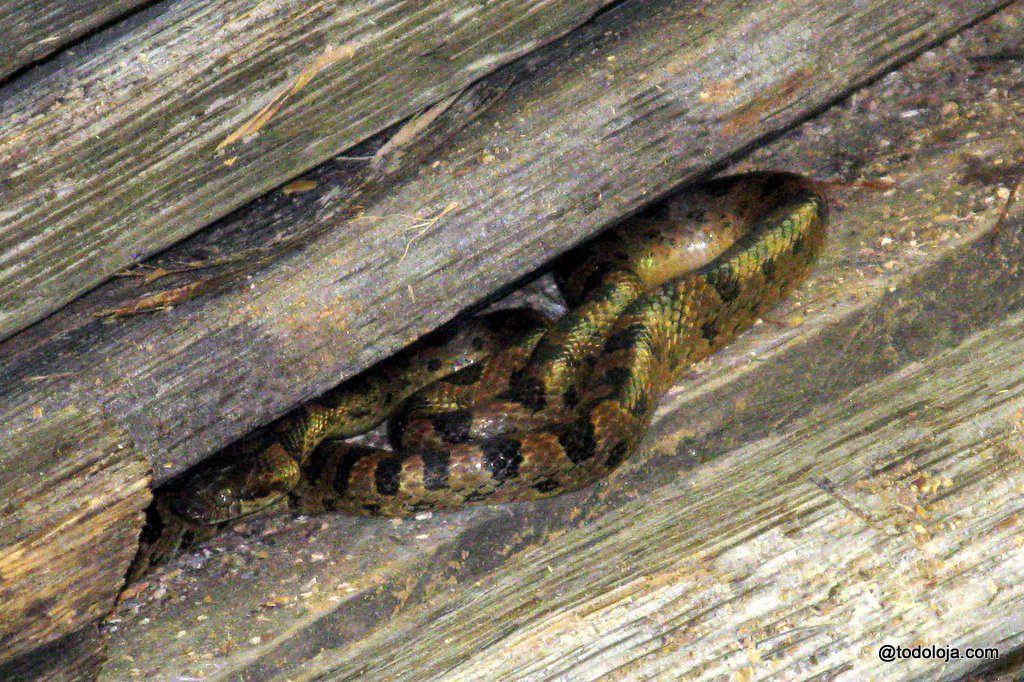
The tail
Admittedly the tail is not often easy to see because snake have a natural tendency to make a tight roll of themselves.
Below is the same macanche but this time we can clearly see that her tail is thick and short.
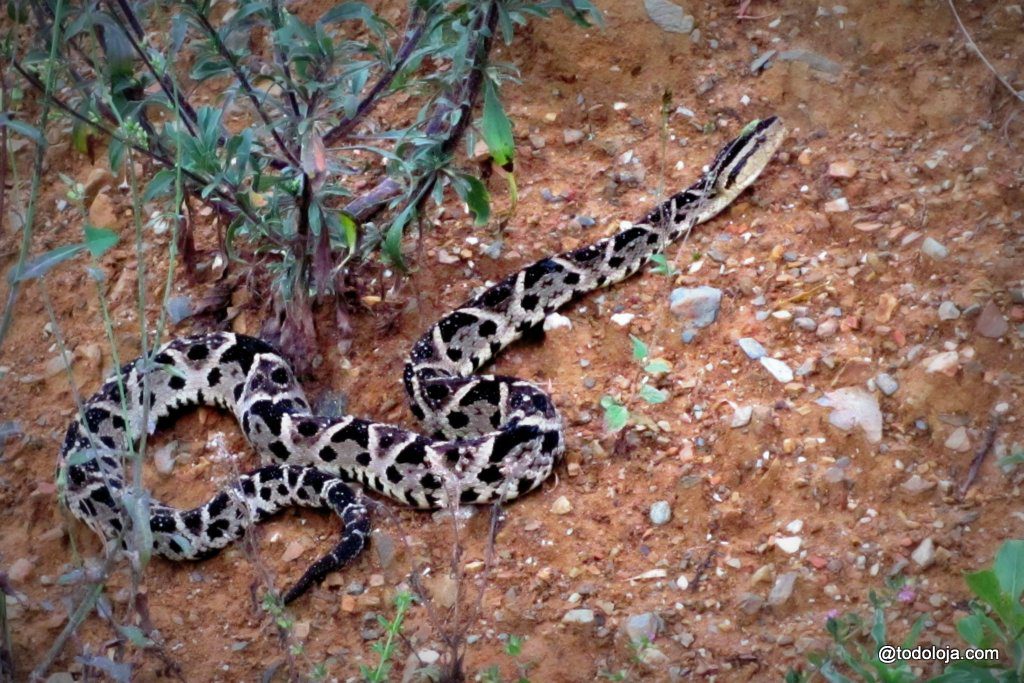
On the other hand, this one which I found in a water reservoir that I was letting dry in order to do some maintenance has obviously a thin and very long tail. That is good. Equis has a short and thick tail, meaning that the body does not get thinner and thinner over a large part of the body but stays pretty much the same thickness and then ends in a short tail. On the specimen below it is clear that roughly as much as 25% of the body length could be considered the tail.

It is also green and has a small head. Another thing I noticed is that to make matters worse, the bad guys don’t move and just sit completely still whereas the good guys tend to run away. Too bad it is not the other way round.
To sum it up
- Look at the head: flat, big, triangular, sticking out IS BAD
- Look at the eyes: round pupil is GOOD, elliptical vertical pupil is BAD
- Look at the pits: two reddish dots between the eyes and the mouth is BAD
- Look at the tail: long and thin is GOOD / short and thick is BAD (*)

(*) A trick to remember which one is what is to think about the rattlesnake that everybody knows is dangerous and makes a rattling sound with its tail.
It would be hard to shake the tail and make that sound if the tail was long and thin, much easier with a short one.
So to remember: short and thick = DANGER, long and thin = SAFE.
Unfortunately there is one exception
Hey, life would not be fun if it was that easy, would it?
In Ecuador, we have the pleasure to host a wonderful and deadly snake that is called the CORAL
One day we were enjoying our breakfast on the porch when this guy just “walked by” as if nothing. I followed him and took some shots. Here he is:
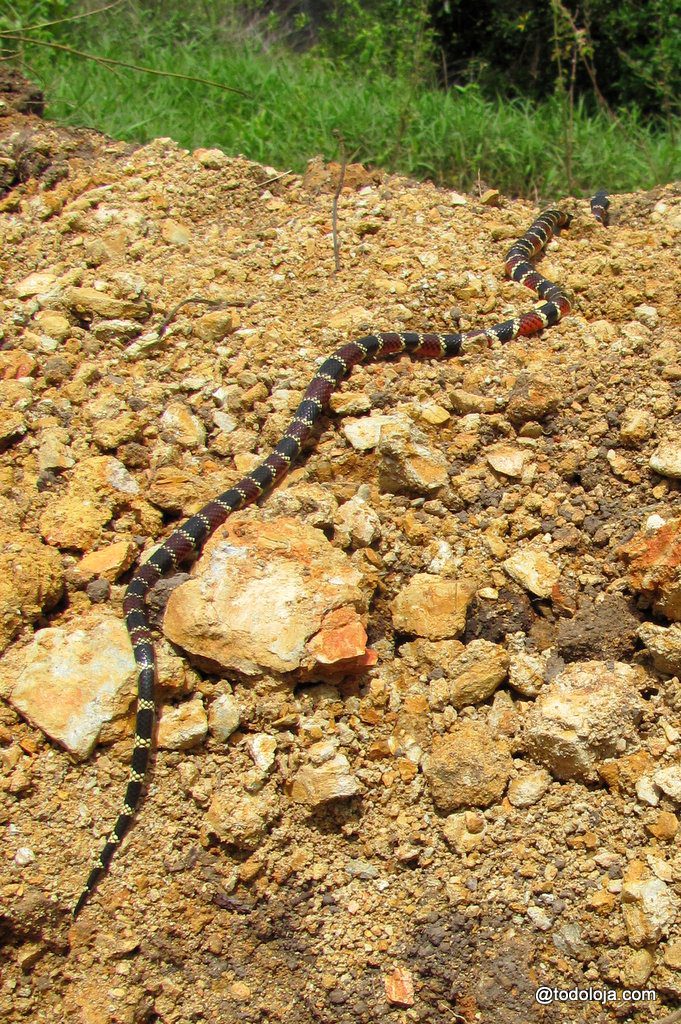
As can be seen it has a long thin tail and we cannot see it on the photo but it also has a small head. However it is very easy to identify because of its beautiful colors.
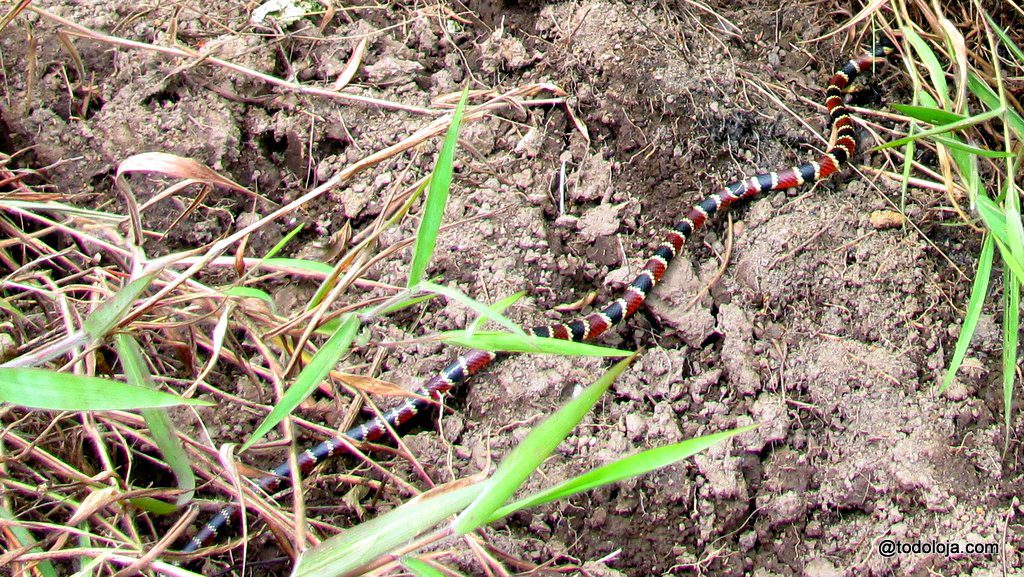
So beware of that one !
Any comments? Want to share some experience? Please post here below.
Appreciated.
© 2016 bbxmusic.com
All rights reserved
Síganos en Facebook: https://www.facebook.com/todoloja
#HechoConAmor #TodoLoja

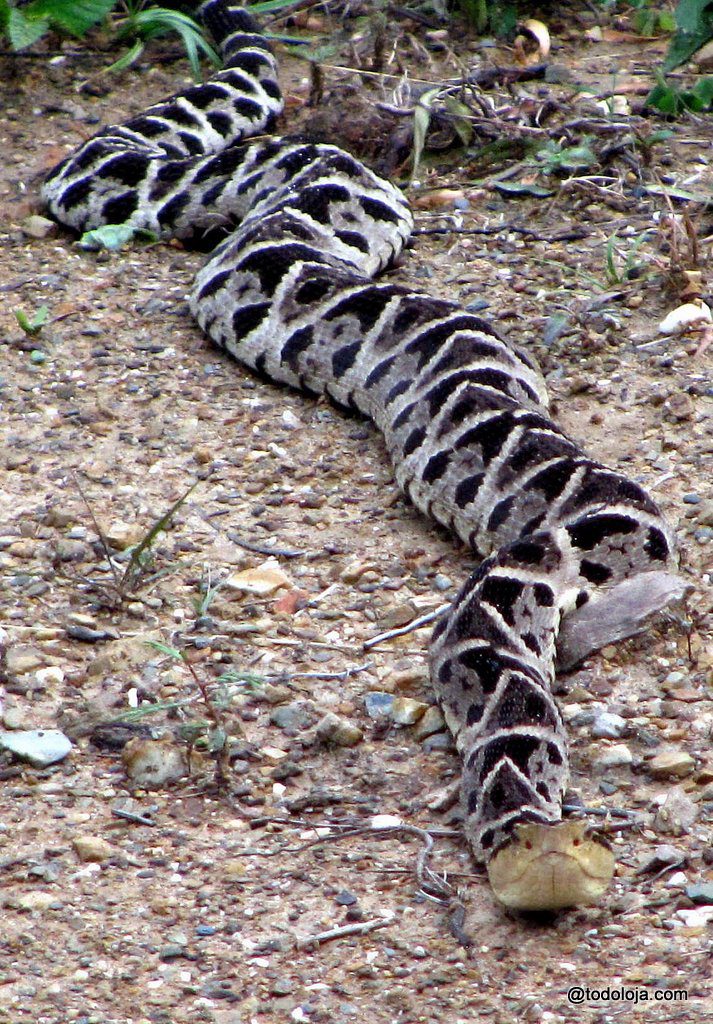

I am from the US, but I’ve lived near Puyo, Pastaza in the jungle and have killed my fair share of Equis and have had many interactions with snakes. The large equis photoed above is a pregnant female and fully elongated (not curled up) and not in a particularly aggressive state. These snakes are aggressive and have a striking distance up to a meter. Don’t try killing one with a machete, use a long pole that is at least 2 meters to violently smack it with. My sister in law was bit by one of these when she was 16 years old in Morona Santiago at night when she was bringing water up from the river, she died shortly after. These snakes are very dangerous and should always be killed if encountered in areas where humans live.
If you get bit by a snake, don’t try any first aid yourself (none of it works). Your best bet is to get to a local hospital as fast as possible, do not delay even if symptoms aren’t apparent. If bit, draw a circle where you were bit with a sharpie or something.
The quicker you receive the antivenom, the better! People sometimes think that there are home remedies or jungle remedies and there are not! Delaying allows for necrosis and other terrible things to spread.
Thought I’d better share this link that shows most of the Ecuadorian snakes: https://www.tropicalherping.com/science/books/reptiles/serpentes.html
Also, THE NURSERY RHYME FOR CORAL SNAKES DOES NOT APPLY TO SOUTH AMERICA, that is just for North America, so don’t think that if Red touches Black you are okay Jack. Coral snakes are not aggressive, but they by far have the deadliest venom of any snake in Ecuador and there is not usually antivenom readily available for these types.
Thanks Pier, great photos and the information is a service to us all here. As to the coral, they are very venomous but non aggressive and their diet is exclusively baby snakes. good bad snakes. ;-)! and to differenciate with the false coral… Red Touch Yellow – Kills a Fellow
Red Touch Black – Venom Lack
Yellow Touches Red – Soon You’ll Be Dead
Red Touches Black – Friend of Jack.
Thanks for the tip, so from what you say mine on the photo is definitely a bad guy isn’t he? Its red stripe touches a yellow stripe and not a black stripe.
By the way Black/Yellow/Red is the Belgian flag (that is where I am from). As a tip one might think of Jean-Claude Vandamme who is from Belgium and is a very dangerous animal too 🙂
I’ve heard that rhyme before, but from the looks of the photo above, we have yellow touching both red AND black… hmmm
Great information, thanks for doing this for us all! I had a very big grey and black snake at my house some time ago with wings on the sides of its face that flared out when he was up in a striking stance, some said very poisonous and called a Butterfly snake, any info on that one?
Thanks Nancy. My pleasure. I believe that the “mariposa” is another variety of bothrops but equally dangerous. Again I am no specialist but from what you said he was not very happy (striking dance).